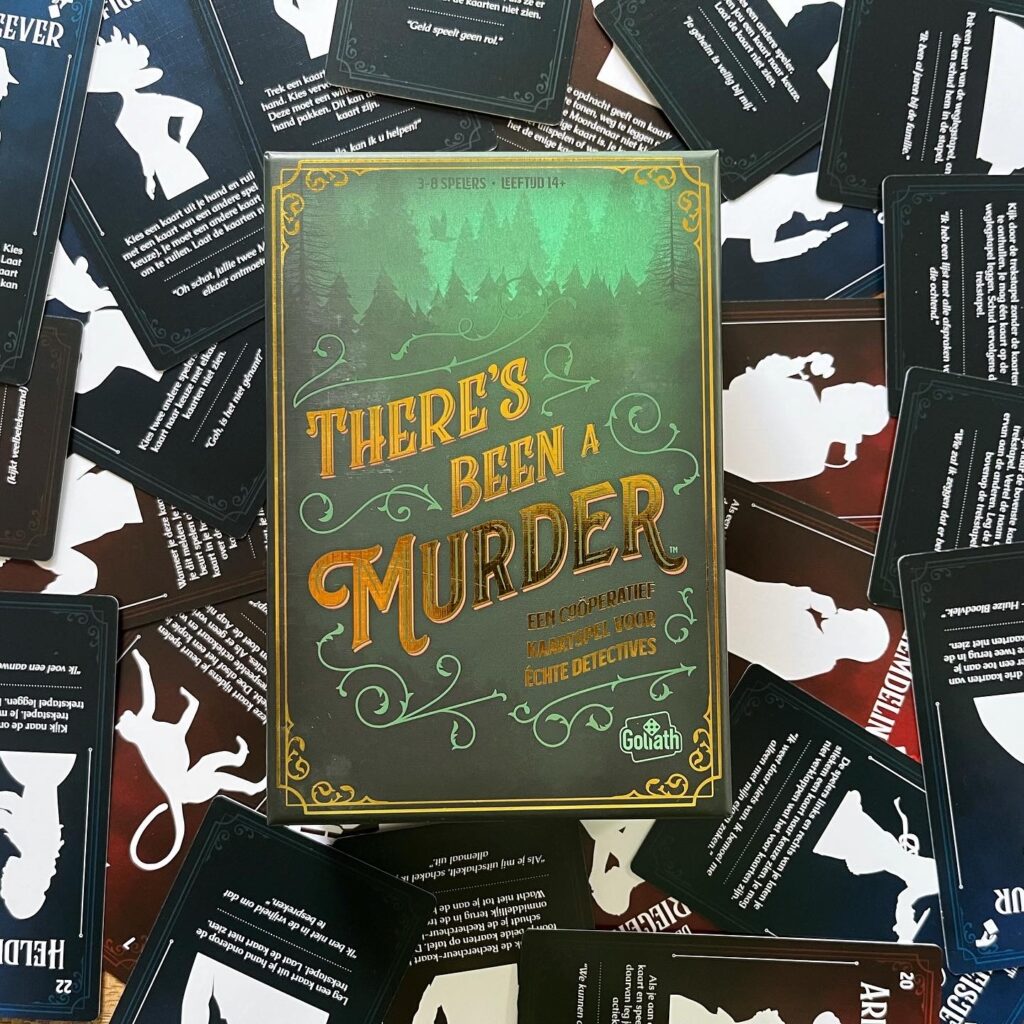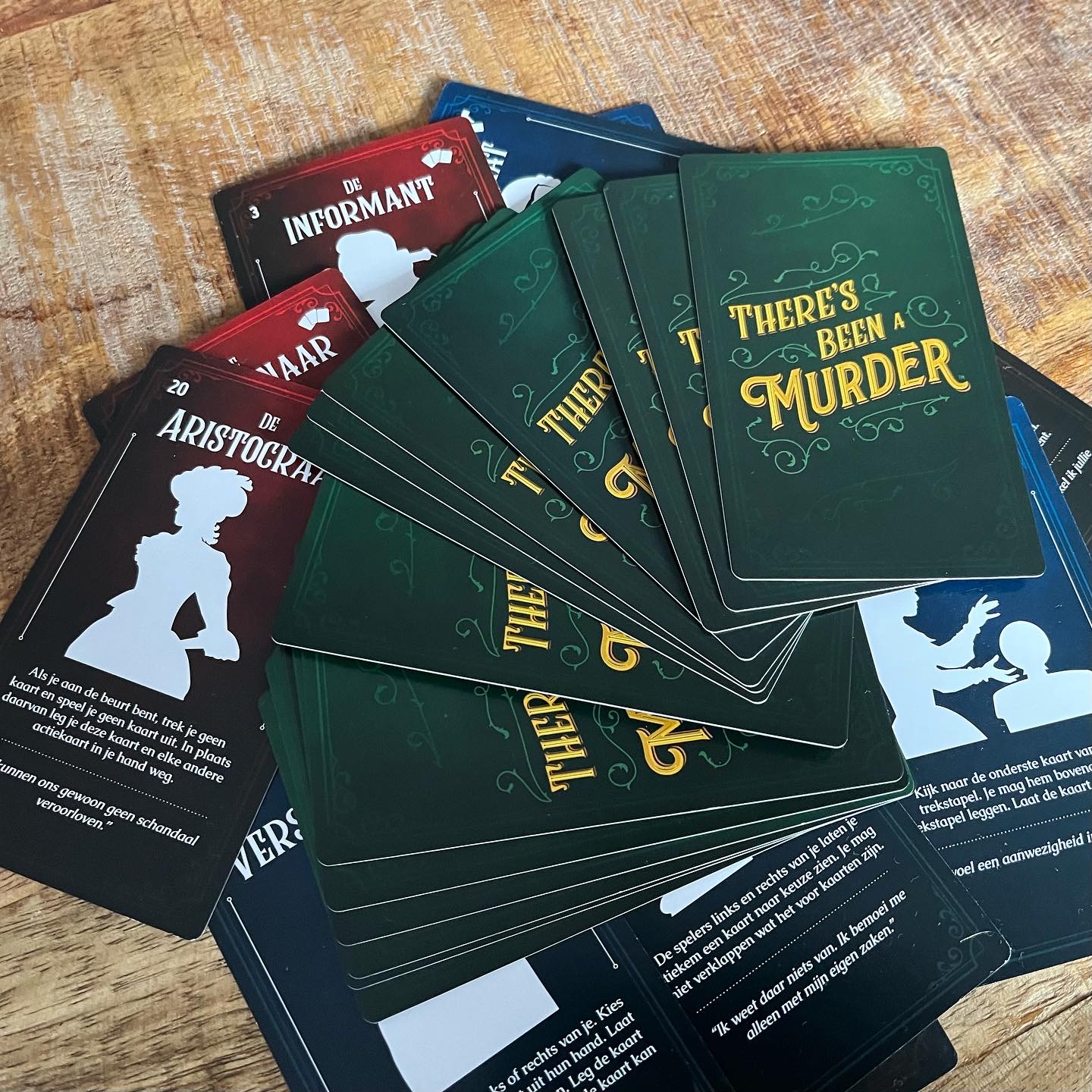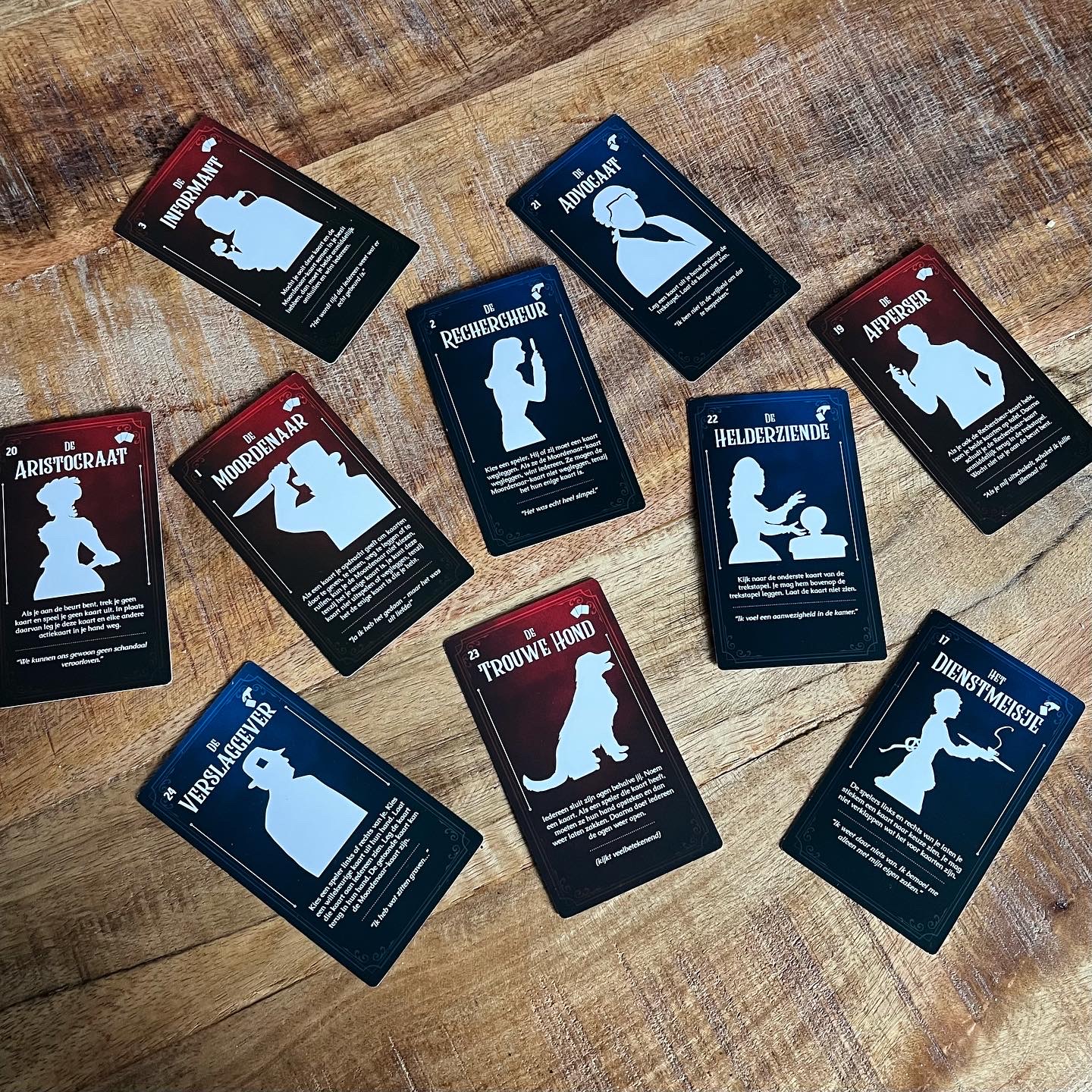What is it about big, old mansions owned by rich families that they are so incredibly often the scene of murder mysteries? Blame it on the butler (or Agatha Christie)! In There’s Been a Murder, there is – again, of course – a murder in a country house in England during the beginning of the last century. Each player is a suspect, but no one wants to talk about the murder or the culprit! This is tricky when the players can only solve the murder by working together. Will you manage to find the murderer (in time)?

In the card game There’s Been A Murder, players collectively try to find the murderer. The murderer is one of the unique 24 cards in this game. A deck of cards is assembled at the beginning of the game, with the set of cards used depending on the number of players. The killer and detective cards are used in every game. The detective card is shuffled somewhere at the bottom of the pile and the assassin somewhere at the top of the pile. There are two types of cards. The blue cards are action cards and the red cards are effect cards. The blue cards are activated as soon as they are played during a turn and the effect of the red cards is active when a player has this card in hand. Each card has a unique action or effect.
At the beginning of the game, each player receives two cards in hand. Players are not allowed to talk to each other about the cards they have in hand or that they have seen during the game, unless an effect of a card explicitly states this. By playing their cards and following the actions and effects of these cards, players collectively try to discover which player has the killer on hand, allowing the player with the Detective or the Informant to unmask the killer. The players win if the Detective is successfully used to find the Killer, or the Killer is passed to the Confidant. Players lose if the Murderer kills the Witness, or if the deck of cards runs out.
At the beginning of a turn, the active player fills his or her hand to two cards. Next, this player plays a card. By playing an action card, players can directly influence the game by collecting information or swapping cards. With the maid for example, players can see other players’ cards. Effect cards usually indicate what a player can or cannot do with the cards in hand. The gossip card allows players to indicate what they have on hand, but during their turn, players must compulsorily play the gossip card.


In There’s Been a Murder, in short, so by playing cards players try to discover which player has the murderer on hand and make sure that the informant ends up with the murderer, the witness stays away from the murderer or that the player with the detective can point out the murderer. For players of Love Letter, the method of deduction in this game may seem familiar, because as in Love Letter, players draw a card (almost) every turn, play a card and try to win with the effects of cards based on limited information. There’s Been a Murder relies very much on luck and less on deduction (which is the case with Love Letter). Many cards in There’s Been a Murder limit how you can deploy certain cards, sometimes leaving you with a useless move. In addition, it can occur that you win or lose on the first turn because the informant or witness is already in the starting hand with the murderer. Otherwise, there is enough variation in the cards so that the game is very interactive. There’s Been a Murder is therefore especially suitable as a party game that players can easily play in between as a game only lasts 10-15 minutes.



